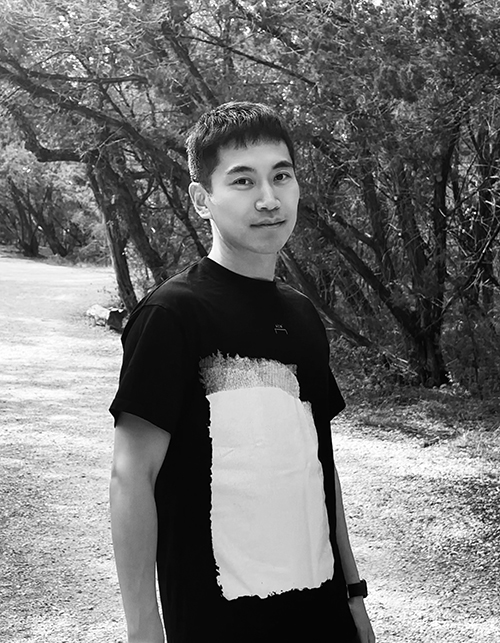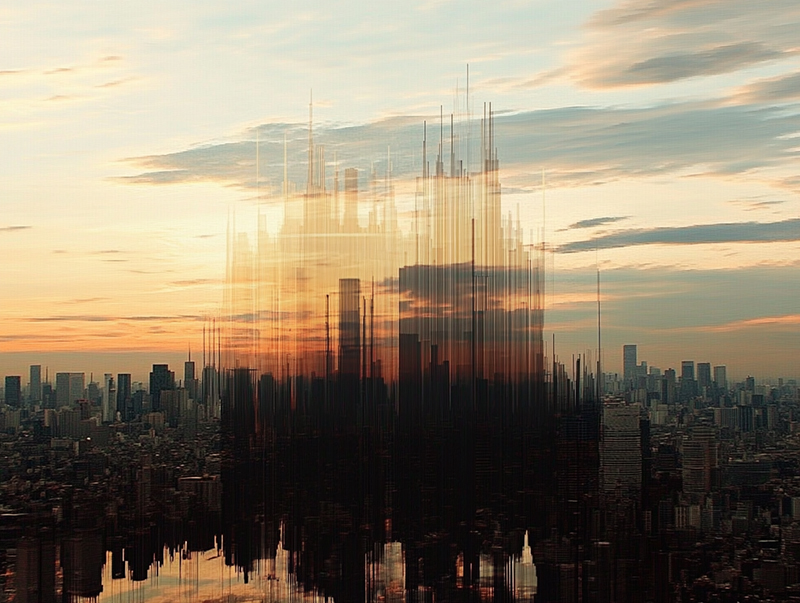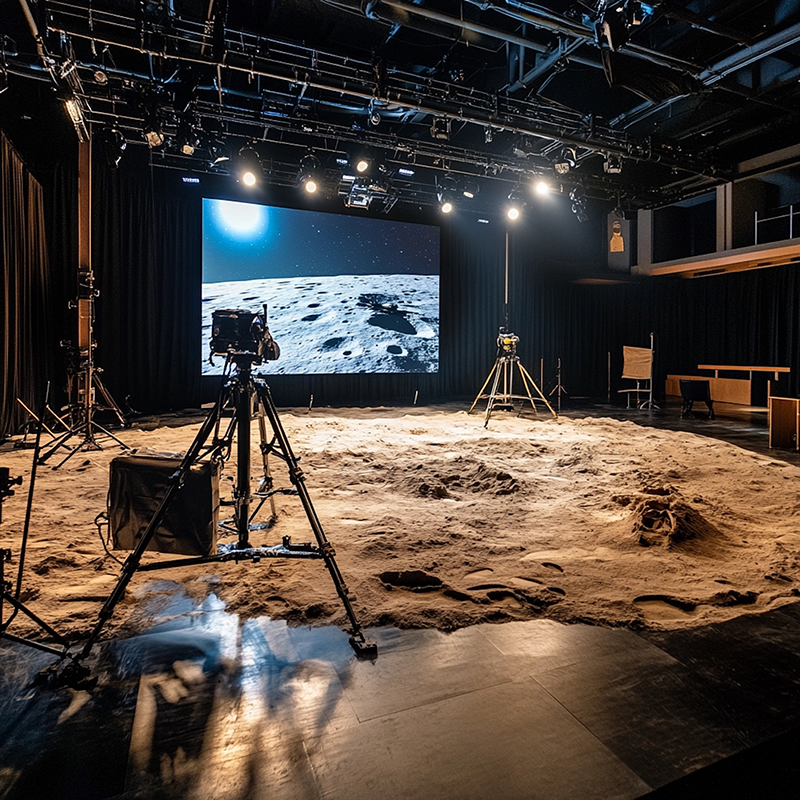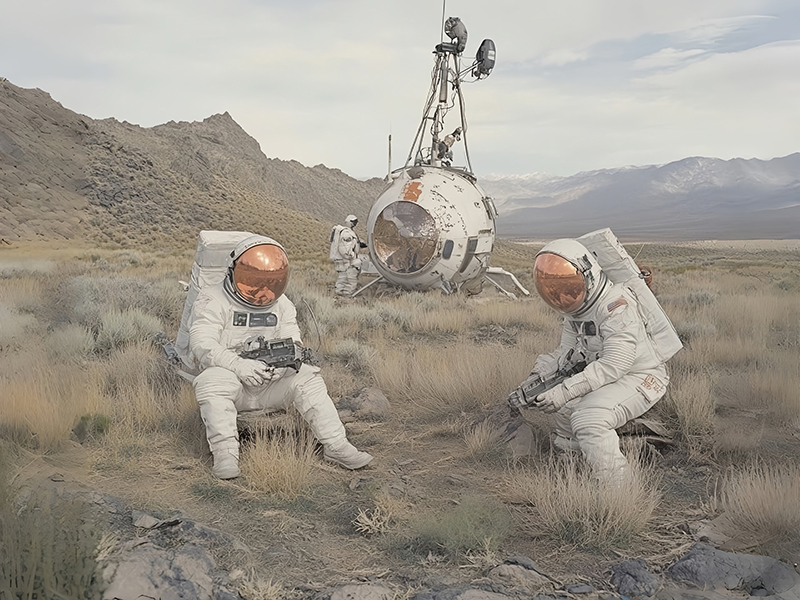
Tell a little bit about how you first got into creating art.
My artistic journey began at an early age, growing up in a rural city in China. Surrounded by nature, I became captivated by the subtle beauty of everyday life—the changing light on a riverbank, the patterns in falling leaves. I began sketching these fleeting moments to preserve them. Over time, art transformed from a mere pastime into a language through which I could convey thoughts and emotions that words could not express. As my career expanded into urban design and AI product design, my creative practice evolved. I discovered new ways to blend physical and digital mediums, turning my artistic expression into a tool for connection—linking people to places, communities, and now, through technology, to each other.

I strive to reflect on how AI is reshaping our lives—sometimes isolating us, sometimes connecting us—and use my art to explore these tensions
What artists or movements have had an impact on you?
I draw inspiration from both timeless masters and contemporary innovators. The emotional depth and color fields of Mark Rothko, along with the serene minimalism of Agnes Martin, have shaped my approach to abstraction, teaching me that simplicity can evoke profound emotion. I also take influence from the Land Art movement, particularly the works of Andy Goldsworthy, whose ephemeral installations celebrate the beauty of nature’s impermanence. On the technological side, artists like Refik Anadol and Ian Cheng have redefined my understanding of digital and generative art, demonstrating how data and AI can serve as raw materials for creative expression. Beyond visual artists, I am inspired by scientists and technologists whose explorations of complexity and form influence how I interpret structure and fluidity in my work.

My work explores themes of connection, memory, and the delicate tension between technology and humanity
What is your source of inspiration?
My inspiration arises from the intersection of nature, urban life, and technology. I am captivated by the organic patterns found in the natural world—the veins of a leaf, the flow of water—and how they reflect the data patterns and digital structures evident in AI-generated forms. My experiences as an urban designer also enhance my creativity; the rhythm of cityscapes, evolving infrastructure, and traces of human presence all shape my visual language. Additionally, I draw inspiration from the emotional and societal impacts of emerging technologies. I strive to reflect on how AI is reshaping our lives—sometimes isolating us, sometimes connecting us—and use my art to explore these tensions.
What themes does your work involve?
My work explores themes of connection, memory, and the delicate tension between technology and humanity. I am fascinated by the dualities of modern life: stillness and motion, isolation and togetherness, the organic and the artificial. My pieces often reflect a longing for serenity amid the complexity of the digital age, offering visual spaces where viewers can pause and reflect. Additionally, my art frequently carries a sense of impermanence, inspired by both natural cycles and the transient nature of digital data. I aim to evoke the fading essence of memory and experience through layered forms, blurred edges, and fragmented compositions.
What is important to you about the visual experiences you create?
I strive to create visual experiences that inspire connections among individuals, their surroundings, and the larger world. Whether through physical installations or digital compositions, I want my work to provide viewers with moments of contemplation. I aim to craft pieces that feel immersive and emotionally resonant, inviting people to interpret the work through their own experiences. It is also important to me that my art remains accessible and relatable. With my background in AI product design, I am passionate about empowering the general public to harness the creative potential of artificial intelligence. I want to create experiences where technology serves as a tool for personal expression—something that empowers rather than alienates.
Do you work from memory, life, photographs, or from other resources? Describe your creative process.
My creative process is fluid and intuitive, drawing from various sources. I often begin with sketches or photographs from my travels—capturing fragments of nature or urban details. These initial references serve as a foundation, yet I allow the process itself to guide me. When working on digital pieces, I utilize generative AI models to introduce unexpected textures and patterns, embracing the machine’s randomness as part of the creative dialogue. For physical works, I enjoy mixing mediums—layering ink, collage, and digital prints to create depth and contrast. Throughout, I remain open to improvisation, often letting accidental marks or algorithmic glitches shape the final composition.
Do you have any artistic goals for the future that you would like to share?
Looking ahead, I am excited to deepen the relationship between art, design, and technology in my practice. I aim to create interactive, generative installations that evolve in real time, offering viewers dynamic, ever-changing visual experiences. I am also passionate about making emerging AI tools more accessible to the general public, helping individuals use technology as a medium for creative self-expression. Beyond my personal practice, I hope to collaborate with other artists, designers, and scientists to explore how creative technology can foster empathy and connection. Ultimately, my goal is to create works that are visually captivating and inspire people to reflect, connect, and engage with their inner worlds as well as the larger collective experience.


